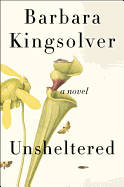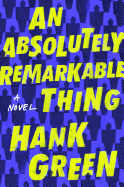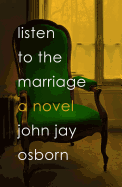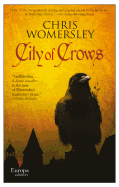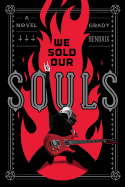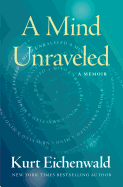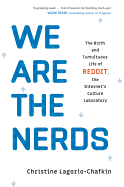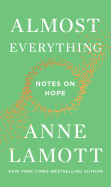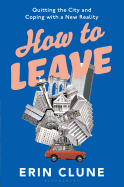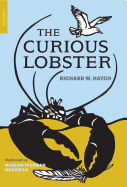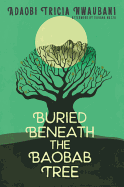
Randall de Sève is the author of the New York Times bestseller Toy Boat, as well as The Duchess of Whimsy, Mathilda and the Orange Balloon, Peanut and Fifi Have a Ball and A Fire Truck Named Red. Randall fully admits that she's gone through life thinking that every big box really could contain an elephant. It's her runaway imagination that has also inspired her teaching of young children, both at the Blue School and Saint Ann's School in New York City, where she lives with her husband and two daughters. Visit her at randalldeseve.com. Her newest book for young readers is Zola's Elephant (HMH Books for Young Readers).
What was your inspiration for this story?
For as long as I can recall, I've been fascinated by the idea that the stories we tell ourselves are not always the truth--yet too often we give these stories the power to dictate important decisions and impact our experiences and relationships.
This is where my head was when our new neighbors moved in. They came with a daughter [who's] my daughter's age, and lots of boxes. There was some excitement from the parents (despite the girls' mutual wariness) about a potential friendship; there was also some excitement from my husband: seeing a large box being lugged inside, he joked, "R--'s tiger is here!"
And I dashed upstairs to begin Zola's Elephant.
Why an elephant, specifically?
Good question--especially since the story came from a comment about a tiger! The first drafts were about a girl and her tiger. And (cool side note) I had Pamela's Sleep Like a Tiger in mind in those early days, way before selling this story to HMH or its editor, Ann Rider, showing it, unbeknownst to me, to Pamela. Ultimately, however, I felt like the story needed something bigger than a tiger-sized box to grab its narrator's attention and get her going. An elephant-sized crate was just the thing!
Did you have contact with Pamela or give any specific instructions for the illustrations?
When I write, I always have pictures in mind and describe them in my first drafts. This allows me to pace a story, to avoid overwriting and to leave room for the art to help tell it. Before a story goes to its illustrator, however, all but the narrative art notes come out, so that the artist can bring their own vision to the piece. I had no direct contact with Pamela through this process (standard practice) and only sent a few queries through our editor. We've still never met, but we exchanged love letters over the holidays when our jobs were done.
How did you feel upon seeing Pamela's illustrations for the first time?
At first, I was speechless, in awe. The art is so full of whimsy and delight, with new surprises and treasures on every page. I'm guessing children will be over the moon in love with it.
Who are you hoping will read this book? What do you want readers to come away with from Zola's Elephant?
I've written and spoken about how picture books can be enjoyed on so many levels, by people of all ages. I hope Zola's Elephant entertains children and their adults; I also hope it gently nudges readers to rethink some of their own fixed narratives.
Are you working on anything at the moment?
I'm wrestling with the idea of forgiveness... and Vikings. --Siân Gaetano
Pamela Zagarenski: Drawn to Paint
 Pamela Zagarenski is the winner of two Caldecott Honors. The books she has illustrated have also been Booklist Editor's Choices and winners of Bank Street's Claudia Lewis Award, and have been translated into many languages. As well as illustrating picture books, she creates paintings and has a gift card line. Her newest book for young readers is Zola's Elephant (HMH Books for Young Readers). She lives in Connecticut. Visit her on Instagram and Twitter.
Pamela Zagarenski is the winner of two Caldecott Honors. The books she has illustrated have also been Booklist Editor's Choices and winners of Bank Street's Claudia Lewis Award, and have been translated into many languages. As well as illustrating picture books, she creates paintings and has a gift card line. Her newest book for young readers is Zola's Elephant (HMH Books for Young Readers). She lives in Connecticut. Visit her on Instagram and Twitter.
What materials did you use for the illustrations in this book? Are these the materials you regularly use? What draws you to them for your work?
My illustrations are created with acrylic paint on wood and yes, these are materials I regularly use. I love painting. It is hard to say why I am drawn to paint. I have loved it as far back as I can remember. It is much like being drawn to a particular kind of landscape that feels like home: like the old stone walls, red cedars, oak trees and the Atlantic Ocean, paint just feels like part of me.
You have illustrated a number of books written by others, as well as your own written works--do you prefer one over the other? Do the processes differ?
I love words. It has always been impossible for me to hear a word without "seeing" it. When I receive a story from an author I read it over and over, as if I am memorizing it. The words talk to me and, as my contribution to the conversation, I give the words color and a visual life. The story and I need each other equally for the conversation. Whether it is words that I have written or the words from another, it does not really matter. I imagine that the white space between the words reveals imaginary and secret things--with illustrations, I fill in those blanks. When I both write and illustrate, the only real difference is that the conversation between words and images happens simultaneously. The words can tell the pictures what they want to show and then the pictures tell the words what they want to say. Back and forth, like a pendulum, I swing from pen to paint as the book takes shape.
How did you make the choices you did in order to have Zola's Elephant World be different from Zola's Real World?
I felt Zola's real world was new, lonely and frightening. So, I wanted it to feel blue, empty, angular and a bit harsh in contrast with the narrator's soft and colorful life imagined of Zola. The life of one having an elephant as a best friend.
You also create beautifully illustrated greeting cards. Is the process of creation very different from card to book? Is there one you prefer?
A card is simply a two-page book. I admit picture books will always be my favorite and always have been--they are just a more complicated puzzle and I like the challenge. But words and images... and images and words... I am the grateful, humbled puppet of both worlds. --Siân Gaetano
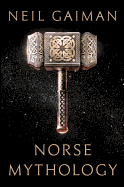 Norse mythology and history are having something of a cultural moment. From hit TV shows such as Vikings to the enormously successful video game God of War, Scandinavian culture has been finding a larger place in the popular imagination. In the literary world, Neil Gaiman's Norse Mythology (Norton, $15.95) offers an approachable introduction for children and adults to Thor, Odin, Loki and many more legendary characters who--believe it or not--are far more interesting than their counterparts from the Marvel movies. Gaiman's appreciation for Norse mythology has been apparent in many of his books, especially in the beloved American Gods (Morrow, $19.99), and here he turns his enthusiasm and storytelling abilities to the dark, weird myths that inspired characters like Mr. Wednesday.
Norse mythology and history are having something of a cultural moment. From hit TV shows such as Vikings to the enormously successful video game God of War, Scandinavian culture has been finding a larger place in the popular imagination. In the literary world, Neil Gaiman's Norse Mythology (Norton, $15.95) offers an approachable introduction for children and adults to Thor, Odin, Loki and many more legendary characters who--believe it or not--are far more interesting than their counterparts from the Marvel movies. Gaiman's appreciation for Norse mythology has been apparent in many of his books, especially in the beloved American Gods (Morrow, $19.99), and here he turns his enthusiasm and storytelling abilities to the dark, weird myths that inspired characters like Mr. Wednesday.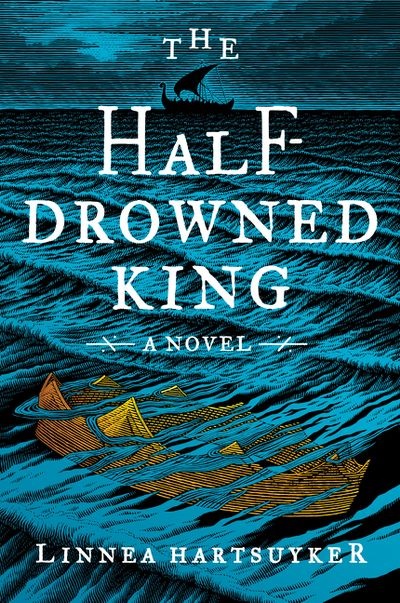 In historical fiction, I would recommend Linnea Hartsuyker's The Half-Drowned King (Harper, $15.95), the first book in an ambitious trilogy about Viking-era Norway, and Bernard Cornwell's Saxon Chronicles (HarperCollins), an extensive series about the ninth-century Viking invasion of what would become England.
In historical fiction, I would recommend Linnea Hartsuyker's The Half-Drowned King (Harper, $15.95), the first book in an ambitious trilogy about Viking-era Norway, and Bernard Cornwell's Saxon Chronicles (HarperCollins), an extensive series about the ninth-century Viking invasion of what would become England.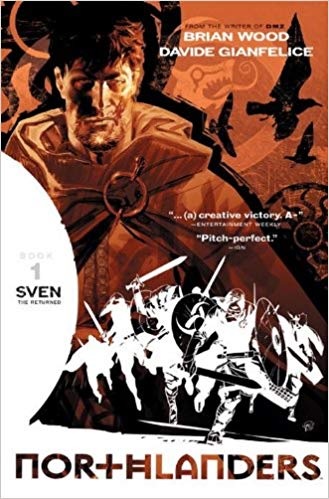 Some of the best historical fiction about the Norse can be found in comics and manga, from Brian Wood's epic Northlanders (Vertigo, $16.95) to Makoto Yukimura's Vinland Saga (Kodansha, $19.99). Northlanders is best approached as a series of short stories or novellas in settings as diverse as the Orkney Islands and Iceland, often focusing on the colonizing efforts of the far-travelling Norse. Illustrated by a number of personal favorites including Fiona Staples and Becky Cloonan, Northlanders is not to be missed. Vinland Saga is a lengthy, winding story eventually concerned with Viking efforts to settle in North America. Yukimura tells a well-researched story rich in visual detail. It's wonderful to see Norse culture celebrated in so many different mediums by so many talented authors, and to have simplistic depictions of Viking barbarians replaced by a more nuanced picture. --Hank Stephenson, bookseller, Flyleaf Books, Chapel Hill, N.C.
Some of the best historical fiction about the Norse can be found in comics and manga, from Brian Wood's epic Northlanders (Vertigo, $16.95) to Makoto Yukimura's Vinland Saga (Kodansha, $19.99). Northlanders is best approached as a series of short stories or novellas in settings as diverse as the Orkney Islands and Iceland, often focusing on the colonizing efforts of the far-travelling Norse. Illustrated by a number of personal favorites including Fiona Staples and Becky Cloonan, Northlanders is not to be missed. Vinland Saga is a lengthy, winding story eventually concerned with Viking efforts to settle in North America. Yukimura tells a well-researched story rich in visual detail. It's wonderful to see Norse culture celebrated in so many different mediums by so many talented authors, and to have simplistic depictions of Viking barbarians replaced by a more nuanced picture. --Hank Stephenson, bookseller, Flyleaf Books, Chapel Hill, N.C.


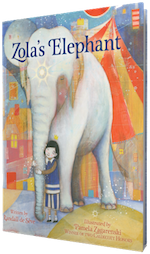


 Pamela Zagarenski
Pamela Zagarenski